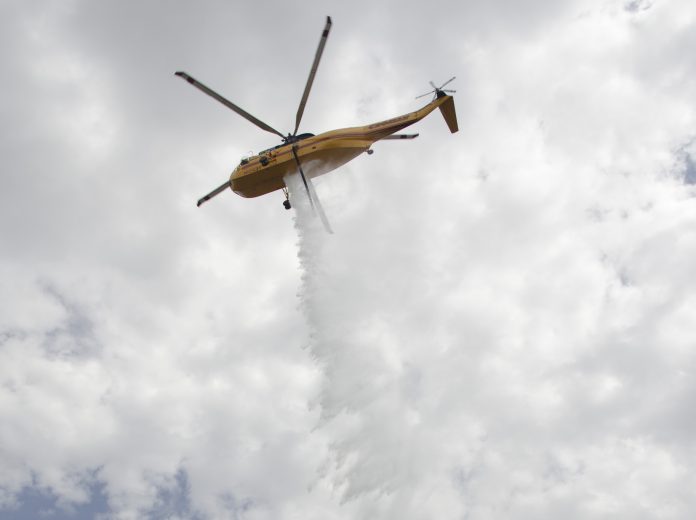San Diego Gas & Electric utilizes helicopters for the placement of utility poles, and the County of San Diego has been able to take advantage of that to augment the county’s aerial firefighting fleet.
SDG&E recently entered into a long-term lease agreement for a second helicopter, and on July 23 the county approved a Memorandum of Understanding with SDG&E for use of the second helicopter for firefighting needs.
The supervisors’ 5-0 vote authorized the director of the county’s Department of Purchasing and Contracting to enter into a three-year agreement with SDG&E which will expire on June 30, 2022, and which will limit the county’s annual costs to $150,000. SDG&E will cover the cost of the first two hours to operate the helicopter in the event it is needed for wildfire suppression while the county will cover the expenses for the next two hours.
“This action will strengthen our aerial assets within the county,” said Supervisor Jim Desmond. “I’m very happy to see the County of San Diego and SDG&E in a partnership.”
Not only will both helicopters be available for firefighting if necessary, but during periods of high wildfire risk one of the helicopters will be pre-positioned in North County. The California Department of Forestry and Fire Protection will determine the needs.
The helicopters can stay airborne for up to two and a half hours before they need to be refueled and can carry more than 2,600 gallons of water per trip. The helicopters can drop between 20,000 and 30,000 gallons per hour with the proximity of a water source to the fire constituting the primary variable.
During 2018 the SDG&E helicopter was used for the West Fire in Alpine, the Rangeland Fire in Ramona, the Pasqual Fire in the San Pasqual Valley, and the Recycle Fire in Campo.
SDG&E’s second helicopter will be a UH-60 Blackhawk. A 2016 Board of Supervisors agreement covered the use of SDG&E’s Sikorsky S-64. The original agreement was approved in 2009 and subsequently renewed.
If funding for flight time is available the county and SDG&E will also make the helicopters available to cities and fire protection districts at no cost, although if the county has reached its maximum annual costs the jurisdictions would be responsible for the flight time hourly rate expense. The county will seek reimbursement from the state or Federal government in the event the helicopters are used to suppress a wildfire.














